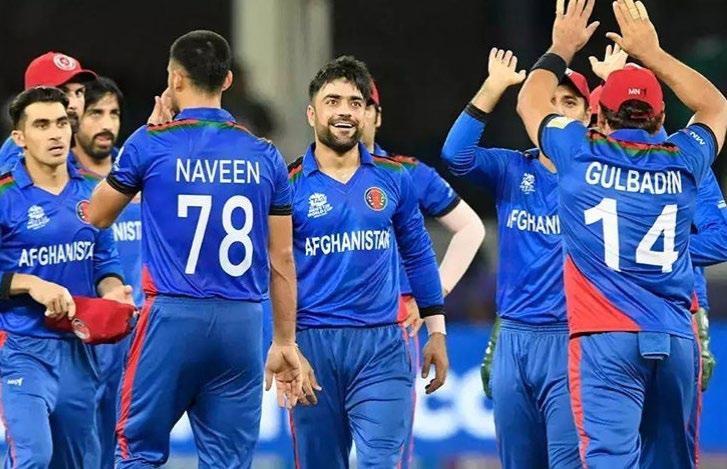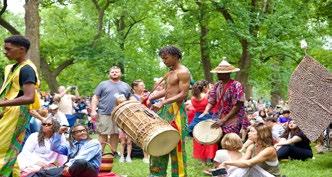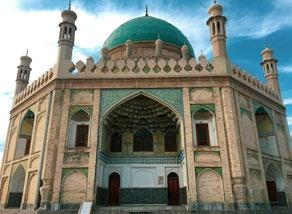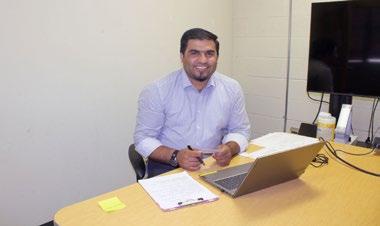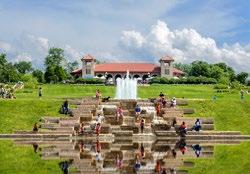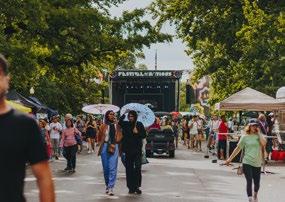AFGHAN COMMUNITY CENTER
Bridging Communities and Stories
My name is Sara Gholami, and I am honored to introduce myself as the Community Relations Coordinator at the International Institute and Executive Editor for the Afghan Journal. Originally from Iran, I have called the United States home for the past ten years. My academic background includes a bachelor’s degree in Sociology and a master’s degree in Business Administration.
During my time in Iran, I had the privilege of working in a museum, which enhanced my appreciation for cultural heritage and the importance of preserving and sharing history. Additionally, I co-wrote seven books that were published in Iran, deepening my understanding of the power of storytelling and the importance of sharing diverse perspectives. I also worked for one year as a reporter and journalist at ISNA.
As the Community Relations Coordinator, my primary focus is on fostering strong relationships within the Afghan community and bridging connections with local resources. My responsibilities include organizing community events, facilitating access to essential services, and creating programs that empower individuals and families. I am also actively involved in the Afghan Journal, where we aim to share stories, news, and insights that resonate with our community. This journal will be published on the Afghan Community Center website and distributed at various events, mosques, churches, and other locations.
The International Institute has a long-standing history of supporting immigrants and refugees, offering a wide range of services including language classes, employment assistance, and cultural orientation.
As part of this mission, the Afghan Journal sewrves as a vital communication tool to highlight the achievements, challenges, and events within our community.
My vision is to build a vibrant, inclusive, and supportive community where everyone feels valued and heard. I aim to create spaces for dialogue, cultural exchange, and mutual support, helping to strengthen our collective identity and resilience. Through collaborative efforts and a shared commitment to our community’s well-being, I believe we can achieve remarkable outcomes together.
If you are interested in collaborating with us or have any ideas that can benefit our community, please feel free to reach out to me. I am excited about the opportunities ahead and look forward to working with each of you to make our community stronger and more connected. Thank you for welcoming me. I am eager to contribute to the continued growth and success of our Afghan community.
Email:gholami-kouhis@iistl AFghancenter.org
A Journey of Resilience and Opportunity
From June 2022 to January 2024, St. Louis, Missouri, has become a new home for 98 Afghan individuals who relocated from Albania. This report offers a comprehensive overview of their demographic composition, employment status, types of occupations pursued, and highlights a compelling narrative within the community.
Demographic Overview
The resettled Afghan population in St. Louis consists of 98 individuals, with 46 males and 52 females. This demographic composition reflects a balanced gender distribution within the community, highlighting the diversity and inclusive nature of our population. These individuals have resettled in St. Louis, bringing with them a rich tapestry of backgrounds and experiences, contributing to the cultural and social fabric of our city.
Children and Youth Representation
The community exhibits a vibrant youth presence, with 50 individuals under the age of 20, constituting 51.02% of the total population. On average, individuals arrive in St. Louis at the age of 21, indicating a dynamic and enterprising demographic keen on pursuing better prospects and actively participating in the local economy.
Employment Landscape and Occupational Diversity
Our survey of 48 adults aged 20 and above revealed that 24 individuals are currently employed after receiving training from international institutes, indicating a 50% employment rate within this group. This showcases the positive impact of training and education on job opportunities among adults in our community.
- Manufacturing Dominance:
The manufacturing sector plays a crucial role in the economic integration of the resettled Afghan community in St. Louis, significantly improving their living standards. Many community members have secured stable, well-paying jobs in this sector. For instance, True Manufacturing employs production team members and machine operators, offering wages between $22 and $23 per hour. Similarly, Bausch + Lomb hires multiple manufacturing associates at a consistent rate of $18 per hour.
-Retail Opportunities:
In addition to manufacturing, some individuals have found employment in retail. For example, Garbanzo Mediterranean Fresh employs cashiers with wages that increased from $11.15 to $12.90 per hour between November 2022 and February 2023. Walmart also provides opportunities as stockers, with wages of $17 per hour.
- Specialized and Technical Roles:
The community also demonstrates diversity in specialized fields. TCARE Inc. employs a software engineer at a rate of $26.04 per hour, showcasing opportunities for those with technical skills. Additionally, the International Institute hires an immigration admin assistant at $17.83 per hour, reflecting the variety of administrative roles available.
These findings highlight the significance of skills development across various sectors of our local economy and underscore the diverse occupational landscape within the resettled Afghan community in St. Louis.
Conclusion
The Afghan Afghan resettlement in St. Louis marks a significant chapter of resilience and adaptation. The demographic insights, employment trends, and individual narratives underscore the community’s eagerness to rebuild lives and forge meaningful contributions to their new environment. As they continue to integrate into local society, these individuals exemplify the transformative power of support and opportunity in fostering a brighter future.
Being Flexible and Open-Minded Will Make Life Much Easier
My name is Najeebullah Noori, and my journey from Afghanistan to St. Louis is a story of resilience, hope, and the pursuit of a better life for my family. I hold a bachelor’s degree in political science and spent over a decade working with nonprofit organizations in Afghanistan, helping school and university students secure scholarships. This mission was fulfilling, but the instability in Afghanistan prompted me to seek a safer environment for my family.
We were evacuated to Albania, where we spent nearly two years embraced by the warmth and hospitality of its people. The sun-drenched beaches and vibrant cultural activities provided a sanctuary for us. Our time in Albania was marked by a sense of community, where we could begin to heal from past traumas. However, I knew Albania was just a stepping stone.
The first time I met I have met someone from Saint Louis was Moji, who told us about St. Louis, a city known for its friendly and welcoming community. Her description of the opportunities and supportive Afghan community in St. Louis motivated me.
The decision to move was both exciting and daunting, filled with logistical challenges. From the moment we arrived in St. Louis, we were met with warmth and hospitality. The local Afghan community embraced us, easing our transition. Neighbors, colleagues, and new friends all played a part in helping us feel at home. Our first impressions of St. Louis were overwhelmingly positive. Unlike Albania, there were no beaches, but we found affordable housing, easier access
to driving licenses, and ample job opportunities. It was a place where we could envision a stable future for our children.
Living in St. Louis has been transformative. I now have a full-time job at the International Institute, which advances my career in the US. This role allows me to continue my passion for supporting others, just as I did in Afghanistan and Albania. The supportive community and numerous opportunities in St. Louis give me confidence that my family’s future is bright.
Reflecting on our journey, I feel a deep sense of gratitude and positivity about the decisions we’ve made. Moving to St. Louis has provided us with stability and the chance to build a new life. My dream for my family in this new environment is simple yet profound – to provide them with a stable and prosperous future. I want my children to have access to quality education and opportunities that will enable them to thrive.
To other Afghan families considering a move to St. Louis, I offer this advice: be open-minded and flexible. The city is a great place to start a new life, especially for families. Its supportive community and numerous opportunities make it an ideal choice for those seeking a fresh start. Our story is one of resilience and hope, and each day in St. Louis brings us closer to the future we envisioned when we first set out on this journey.
By: Najeebullah Noori
A New Dawn for Afghanistan
In what can only be described as a landmark achievement, Afghanistan’s national cricket team has advanced to the semi-finals of the ICC Men’s T20 World Cup for the first time in history. Under the spirited leadership of Rashid Khan, the team has demonstrated exceptional skill and resilience, captivating fans worldwide with their journey.
Key Matches and Performances
Afghanistan’s path to the semi-finals was fraught with challenges, but their determination saw them through. The pivotal match against Bangladesh was a testament to their resolve. Set a modest target of 115-5, Afghanistan’s bowlers rose to the occasion, with Rashid Khan and Naveen-ul-Haq each taking four wickets. Bangladesh, chasing a revised target due to rain, was bowled out for 105, securing Afghanistan’s place in the semi-finals
The squad, a mix of seasoned players and emerging talents, has shown remarkable cohesion. Key players like Rahmanullah Gurbaz, Ibrahim Zadran, and the young Mohammad Ishaq have played vital roles. Notably, their victory against Australia, a cricketing powerhouse, was a significant highlight of the tournament, underscoring Afghanistan’s growing stature in international cricket
Historical Context
Cricket’s roots in Afghanistan trace back to the early 2000s, gaining popularity among Afghan refugees in Pakistan. The Afghanistan Cricket Board (ACB), founded in 1995, has been instrumental in nurturing the sport. The national team’s rapid ascent culminated in achieving full member status with the International Cricket Council (ICC) in 2017, a milestone that enabled them to compete in Test cricket
Reflections on the Journey
The progress of Afghanistan’s cricket team in this World Cup has been a source of joy and pride for fans worldwide. It underscores the transformative power of sports in uniting and uplifting communities. The dedication and hard work of players like Rashid Khan highlight the spirit of perseverance that defines Afghan cricket.
As Afghanistan prepares to face South Africa in the semi-finals, the anticipation and excitement are palpable. The team’s remarkable journey serves as a powerful reminder of what can be achieved with determination and collective effort. Here’s to hoping for another historic win and continued success in their cricketing endeavors.
This unique journal entry captures not only the latest developments in Afghanistan’s T20 World Cup campaign but also provides a deeper historical and emotional context. It reflects on the significance of their achievements and the broader impact on the Afghan community, creating a rich narrative that goes beyond mere sports reporting.
Ashura is one of the most important religious days in the Islamic calendar, observed on the 10th day of Muharram, the first month of the Islamic year. In 2024, Ashura is tentatively scheduled for July 17. This day commemorates the martyrdom of Imam Hussain, the grandson of Prophet Muhammad, who was killed in the Battle of Karbala in 680 AD. The martyrdom of Imam Hussain is a profound event in Islamic history, symbolizing the struggle against tyranny and injustice.
Ceremonies and Activities:
1. Processions and Mourning
On this day, people gather for public processions and mourning ceremonies. These events include the recitation of elegies, chest-beating (sineh-zani), and flagellation (zanjir-zani), all performed as acts of mourning and remembrance for the sacrifices of Imam Hussain and his companions.
2. Recitation of Elegies
Poems and elegies are recited to recall the events of Karbala and the sufferings of the Prophet’s family. These recitations aim to evoke sorrow and empathy for the tragic events.
3. Reenactment of the Battle of Karbala
In some regions, dramatic reenactments of the Battle of Karbala are performed. These reen actments help people visualize the historical events and understand the immense sacrifices made by Imam Hussain and his followers.
4. Prayer and Supplication
Muslims attend mosques for special prayers and supplications on Ashura. They pray for forgiveness, guidance, and blessings for themselves and their loved ones.
5. Fasting
Some Muslims observe fasting on the day of Ashura. This act of fasting is a form of respect and remembrance for the sacrifices of Imam Hussain.
6. Lectures and Educational Programs
Scholars and religious leaders give sermons and lectures in mosques and community centers, discussing the life and martyrdom of Imam Hussain. These talks emphasize the moral and ethical lessons derived from his stand against oppression.
Significance of Ashura
Ashura is not just a day of mourning but also a time for Muslims to reflect on the lessons of Imam Hussain’s sacrifice. It serves as a reminder of the importance of standing up against injustice and striving for truth and righteousness. The day fosters a sense of unity and spiritual renewal among Muslims, encouraging acts of charity, self-reflection, and community bonding.
Ashura in Ashura in Afghanistan2024
“There are a lot of children in Afghanistan, but little childhood.” Khaled Hosseini, The Kite Runner
Khaled Hosseini, renowned for his poignant storytelling, has become a literary beacon worldwide. Born on March 4, 1965, in Kabul, Afghanistan, his journey to becoming a celebrated American author highlights the resilience and adaptability of immigrants. Hosseini’s early life in Kabul was marked by comfort and privilege, with a diplomat father and a teacher mother. In 1976, the family moved to Paris due to his father’s diplomatic role. Their intended temporary stay turned permanent after the Soviet invasion of Afghanistan in 1979. Seeking refuge, the family settled in San Jose, California, in 1980.
The Immigrant Experience
Adjusting to life in the U.S. was challenging. The Hosseini family faced economic hardships, and Khaled navigated the complexities of adapting to a new culture while maintaining his Afghan identity. These experiences would later influence his literary works, providing rich narratives of personal and collective memories. Despite these challenges, Hosseini pursued a career in medicine. However, the stories of his homeland and the plight of Afghan refugees continued to resonate with him. While practicing medicine, he began to write, drawing inspiration from his personal experiences and Afghanistan’s tumultuous history.
Literary Success and Global Recognition
Khaled Hosseini’s debut novel, The Kite Runner (2003), brought him international fame. The story of Amir and Hassan, set in a changing Afghanistan, explores themes of friendship, guilt, and redemption, resonating with readers worldwide. His next novel, A Thousand Splendid Suns (2007), highlighted the strength and resilience of Afghan women, Mariam and Laila, amidst war and oppression. In And the Mountains Echoed (2013), Hosseini expanded his exploration of familial bonds and sacrifices across generations and continents. Beyond writing, Hosseini is a dedicated advocate for refugees and humanitarian causes. Appointed as a Goodwill Envoy for the UNHCR in 2006, he established The Khaled Hosseini Foundation in 2008, providing crucial support to Afghans, focusing on shelter, education, and economic opportunities for women and children.
A Legacy of Resilience
Khaled Hosseini’s journey from Kabul to California, from physician to celebrated author, embodies the resilience of immigrants. His works offer insights into Afghanistan’s cultural and historical landscape and emphasize universal themes of human connection, endurance, and hope. Through his powerful narratives, Hosseini inspires deeper understanding and empathy for the immigrant experience and the enduring spirit of those seeking a better life.
Kabuli Pulao, often celebrated as the national dish of Afghanistan, is a true reflection of the country’s rich culinary legacy. This aromatic and visually appealing dish is a delightful combination of basmati rice, tender meat, sweet and savory toppings, and a unique mix of spices, making it a favorite at Afghan gatherings and celebrations.
At its core, Kabuli Pulao is a rice dish that features long-grain basmati rice cooked to perfection with pieces of lamb or chicken. The meat is typically marinated with a blend of spices that may include cumin, cardamom, cinnamon, and cloves, which infuse it with a deep, robust flavor. This marination process is crucial, as it tenderizes the meat and allows it to absorb the aromatic spices fully.
The preparation of Kabuli Pulao begins with sautéing onions and garlic until they are golden brown, providing a rich base of flavor. The marinated meat is then added to the pot and cooked until it is tender and succulent. This mixture is set aside while the rice is prepared. The rice is often parboiled and then layered with the meat mixture, allowing the flavors to meld together as the dish finishes cooking. Saffron, soaked in warm water or milk, is often sprinkled over the rice to impart a beautiful golden hue and a subtle, fragrant aroma.
What sets Kabuli Pulao apart is its distinctive topping of caramelized carrots, raisins, and slivered almonds or pistachios. The carrots are julienned and sautéed until they are slightly caramelized, enhancing their natural sweetness. Raisins are briefly soaked and then
sautéed to plump them up, adding a burst of sweetness to the dish. These toppings are not only flavorful but also add a lovely contrast in texture to the soft rice and tender meat.
The final assembly involves layering the rice and meat in a large pot or a serving platter, with the caramelized carrots, raisins, and nuts arranged on top. This method ensures that every bite of Kabuli Pulao offers a mix of flavors and textures – the savory, spiced meat, the fluffy, aromatic rice, and the sweet, crunchy toppings.
Serving Kabuli Pulao is often a communal affair, with the dish placed at the center of the table for everyone to share. It is typically accompanied by a simple salad, chutney, or yogurt to balance the richness of the pulao. This dish is not only a feast for the palate but also a feast for the eyes, with its vibrant colors and enticing aroma.
Kabuli Pulao is more than just a meal; it is a symbol of Afghan hospitality and tradition. It is served at weddings, special occasions, and family gatherings, where it brings people together and fosters a sense of community. The dish embodies the essence of Afghan cuisine – a harmonious blend of flavors, textures, and aromas that tell the story of a rich culinary heritage.
By: Sara Gholami Kouhi
Kabuli Pulao: The Heart of Afghan Cuisine

Kandahar, one of Afghanistan’s oldest cities, is imbued with a historical and cultural significance that spans several millennia. Located in the south of the country, this city has served as a vital crossroad for various civilizations, including the Persians, Greeks, Mauryans, Arabs, Mongols, and Mughals. Its strategic location has made it not just a focal point in Afghanistan’s history, but also a key player in the broader historical narratives of South and Central Asia. The origins of Kandahar can be traced back to Alexander the Great, who is said to have founded the city in the 4th century BCE. Originally named Alexandria Arachosia, it was one of the many cities established by Alexander across his empire, intended to secure his conquests and facilitate cultural exchange. The remnants of Greek architecture and inscriptions found in the area underscore its ancient Hellenistic influences. Over the centuries, Kandahar flourished under various rulers. It was an important city for the Mauryan dynasty of ancient India and later became a significant center of Buddhist learning and art. The spread of Islam into Afghanistan saw Kandahar emerge as a crucial Islamic center, with the construction of many mosques and madrasas.
The city’s most famous landmark is perhaps the Mosque of the Cloak of the Prophet Muhammad, which houses a cloak be lieved to have beenworn by the Prophet. This site
has not only religious but also historical importance, as it was used by Ahmad Shah Durrani, founder of the modern state of Afghanistan, to rally support for his campaigns in the 18th century. Kandahar’s role in more recent history is equally pivotal. During the Soviet-Afghan War, it was a major battleground due to its strategic position near the Pakistan border. Today, while Kandahar faces modern challenges, it retains its status as a key economic and cultural hub, especially in terms of agriculture and trade. The city’s architecture is a testament to its storied past, featuring a mix of ancient structures alongside more modern developments. The Old City of Kandahar, with its traditional mud-brick walls and bustling bazaars, offers a glimpse into the city’s rich historical tapestry. Visitors can explore the intricately decorated shrines and the remnants of ancient fortresses and palaces. Kandahar’s culture is marked by a strong tradition of poetry and arts, with the city being an important center for Pashto literature and music. Despite its beauty and historical depth, Kandahar remains one of the more challenging destinations due to ongoing security issues. However, those who visit or study its history find a city that is emblematic of Afghanistan’s resilience and rich cultural mosaic.
Kandahar: Gateway to Afghanistan’s Past and Future
Afghans who are new to St. Louis are the subject of a documentary film, "Gateway to a New Life." The film introduces Afghan immigrants to audiences and tells the story of how Afghans receive levels of support in St. Louis. The documentary is narrated by well-known Afghan film actress Leena Alam.
In St. Louis, a unique program created with private funds helps Afghan families. The program includes free coding classes, business grants, and an Afghan Community Center and Chamber of Commerce.
"The idea is to help Afghans build their lives here," says Jerry Schlichter, attorney and founder of Arch Grants and the Afghan Support Program. The film features the stories of Afghans who narrowly escaped after the fall of Kabul and chronicles their new lives in St. Louis. Schlichter says many Afghans risked their lives to come to the U.S. The people behind the program believe Afghans can bring a new energy to St. Louis.
Afghan Community Featured in Documentary Film
“Gateway to a New Life”
The just-released HEC Media documentary profiles newly-arrived Afghans in St. Louis
The film was shot over a two-year period and follows the lives of Afghans new to St. Louis and the implementation of the support program. Interviewees include top business leaders in St. Louis, executive directors of nonprofits, Afghan immigrants, and others connected to the immigrant community.
The film premiered in St. Louis at Cinema St. Louis’ Filmmakers Showcase in late July 2024 and is being submitted to other film festivals both nationally and internationally. Additional community screenings may be scheduled for this fall. HEC Media is the producer of the film. The fiilm’s creators include director Kathy Bratkowski, director of photography Peter Foggy, and editor and colorist Greg Kopp. For more informtions about upcoming screenings, visit the film website www.gatewaytoamericafilm.com.
by Kathy Bratkowski, filmmaker
Nestled in the heart of St. Louis, Forest Park is a sprawling urban sanctuary that has been a central part of the city’s life and culture for over a century. Established in 1876, Forest Park spans 1,300 acres and offers a blend of natural beauty, historical significance, and cultural richness. It’s a place where history and modernity coexist, providing a haven for both residents and visitors.
A Glimpse into History
Forest Park’s history is as rich and varied as the city itself. The park was the site of the 1904 World’s Fair, officially known as the Louisiana Purchase Exposition, which celebrated the centennial of the Louisiana Purchase. The fair attracted millions of visitors from around the world and left a lasting legac in the form of beautiful stru tures and cutural institutions.
One of the most enduring legacies of the 1904 World’s Fair is the Saint Louis Art Museum, which still stands proudly on Art Hill. The museum, initially built as the Palace of Fine Arts for the fair, is home to a world-class collection of art spanning centuries and continents.
Cultural and Recreational Hub
Forest Park is not just a historical landmark; it is also a vibrant cultural hub. The Missouri History Museum, located at the northern edge of the park, offers fascinating exhibits about the city’s history and the fair itself. This museum provides visitors with a deeper understanding of St. Louis’s past and its role in shaping the nation’s history. For those with a love for nature and wildlife, the Saint Louis Zoo is a must-visit. Known
for its commitment to conservation and education, the zoo houses over 18,000 animals and offers free admission.
It is a favorite destination for f amilies and animal enthusiasts, providing an opportunity to learn about diverse species in beautifully designed habitats.
Events and Activities
Forest Park is a dynamic venue for numerous events and activities throughout the year. The Muny, the United States’ oldest and largest outdoor musical theater, is a cultural gem within the park. Every summer, it hosts a series of Broadway-style musicals, attracting theatergoers from across the region. The experience of watching a live performance under the stars is truly magical. The park also hosts a variety of festivals and events that draw large crowds. The Great Forest Park Balloon Race is one of the most popular annual events, where vibrant hot air balloons fill the sky, creating a picturesque and festive atmosphere. The St. Louis Earth Day Festival, held in the park, celebrates environmental awareness with activities, performances, and educational exhibits.
Natural Beauty and Recreation
Beyond its cultural institutions, Forest Park is a haven for outdoor enthusiasts. The park’s expansive green spaces, wooded areas, and waterways offer endless opportunities for recreation. Visitors can enjoy boating on Pagoda Lake, cycling on scenic trails, or simply relaxing in the tranquil surroundings. The Jewel Box, an Art Deco greenhouse, is another highlight of the park. It features seasonal floral displays and is a popular spot for weddings and special events. .
Forest Park: A Jewel in St.louis
At its core, the International Institute is a human services organization, offering support to immigrants and refugees in the St. Louis area. With a mission to provide opportunities for immigrants and refugees to thrive to create a welcoming, prosperous, and healthy region for all, this sentiment rings true through the programming and services offered by the organization.
The International Institute’s first multicultural festival was in 1934, though the Festival of Nations we know today started in 2001 at Tower Grove Park. The idea behind the festival has been for international communities to come together and ensure their traditions live on whether that be music and dance, cultural craft practices, or the food that serves as a central cultural representation for everyone.
However, now in 2024, the Festival of Nations lends itself to a greater need and call for the St. Louis region: providing a welcoming environment for all to attract immigrant populations to call St. Louis home. Population decline in the region spurs a new opportunity for all to be involved in the reshaping of St. Louis going forward. Festival of Nations plays a small part in creating a welcoming region. This year, the International Institute of St. Louis hosts the 2024 Festival of Nations on Saturday, August 24 and Sunday, August 25
link dates to the FoN website: https:// festofnations.com/). Festival of Nations brings an energy you can’t find anywhere else! Ignite your senses with cuisine and drinks from around the world, dance to music spanning genres and generations, shop global arts and goods, and do it all with purpose.
The two-day festival is free and open to the public, attended by over 100,000 people, and features the traditions, flavors, sounds and art of more than 80 nations. Together, we’ll highlight the vibrancy of multiculturalism, celebrate our unique identities, and create community impact, cultivating a more prosperous region for all. There will be many family-friendly activities throughout the event so plan to make a day of it in beautiful Tower Grove Park.
When people from different cultures gather to share music, food, art, and traditions, we get to know each other on a deeper and more personal level. We create a spirit of unity where every culture is seen as unique and special, and no culture is truly foreign. View this year’s lineup and purchase your VIP Oasis pass today for even more perks. We look forward to celebrating with you at this year’s Festival of Nations on August 24 & 25.
By Carrie Brickey, Communications Manager
Festival of Nations 2024: Everyone Welcome
“TeaVoila: Souzan Gerami’s Eco-Friendly Tea Revolution”
